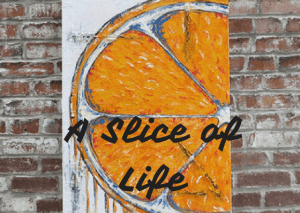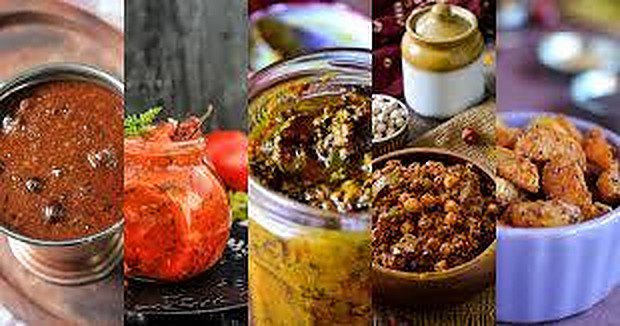Reading Time: 3 minutes
Ruchira tells us about pickle and its type. An exclusive for Different Truths.
 Pickle is a vital item, an integral part of Indian culinary arts. Its common feature in almost all states within the country and faithfully assimilates fruits vegetables and spices peculiar to that particular region.
Pickle is a vital item, an integral part of Indian culinary arts. Its common feature in almost all states within the country and faithfully assimilates fruits vegetables and spices peculiar to that particular region.
Indeed such is the importance of pickles (familiarly called achaar) in the dietary plans and lifestyles of the common people that several rituals customs and superstitions have cropped around it. For instance, the womenfolk who make pickles at home must maintain the utmost hygiene
Indeed such is the importance of pickles (familiarly called achaar) in the dietary plans and lifestyles of the common people that several rituals customs and superstitions have cropped around it. For instance, the womenfolk who make pickles at home must maintain utmost hygiene by way of proper baths and squeaky clean hands; this in order to avoid contamination of any sort and thereby enhance its shelf life.
I am told (mostly hearsay though) that pregnant women and those in the period are excluded from the process of pickle-making. In terms of raw materials that go into the pickle making, India is in a better position as compared to its western counterparts. For in the west, pickles comprise whole onions and cucumber slices soaked and preserved in saltwater or brined and yes certain species of fish. On the contrary, our land possesses a virtually unlimited range of natural products for the purpose.
The mainstay of desi pickles is raw mango (aka kairi). Second, in terms of popularity is lemon and its variants. Their popularity may be ascribed to the fact that both these fruits are plentifully available countrywide.
The mainstay of desi pickles is raw mango (aka kairi). Second, in terms of popularity is lemon and its variants. Their popularity may be ascribed to the fact that both these fruits are plentifully available countrywide. Other ingredients are garlic ginger, green chilis, which may be pickled individually or in combination with other items.
The list doesn’t end here: you have the cauliflower-carrot-turnip combo, a highly popular pickle among Punjabis. However, this is available mainly during the winter months. Dried lotus stem is known by other names e.g. nadru, bhein, kamal kakdi, et al is also a great choice. Tiny round green gongura fruits, tomatoes, olives and red bell peppers/capsicum are also handy options for pickles. Bell peppers are stuffed with tangy, hot spices and left to cure. The end result is lip-smacking delicious.
In the northeastern states, where bamboo grows prolifically, raw (green) bamboo shoots are used in pickles. On a personal note, one of my paternal aunts, who had lived in the idyllic Andamans for a while, had treated us to pickled prawns.
In the northeastern states, where bamboo grows prolifically, raw (green) bamboo shoots are used in pickles. On a personal note, one of my paternal aunts, who had lived in the idyllic Andamans for a while, had treated us to pickled prawns. As I am a prawn freak, this was nothing less than manna for me!
Now, pickles can be of two types depending on the base used. Some pickles contain vegetables doused in mustard with minimal spices. Another type employs slightly thick gravy made up of fenugreek, nigella, carom, cumin and coriander, fennel, mustard, in various proportions. A major factor that helps the cottage pickle industry is the abundance of bright sunlight all round the year. Pickles are traditionally sun-dried, which helps them to cure and mature faster, though now industrialisation has altered the picture.
Pickle oil is often used to add zing to jhaalmuri, the popular sack. We also have a distinct range of sticky pickles (sticky as they contain guud and little oil). These are consumed more as snacks than a dish. You have choices of kul (ber/jujube), tentul (tamarind) dried whole red chilis and aamsattva (dried mango pulp) in interesting combinations.
Interestingly, we Bengalis, unlike people, in other parts of India, by and large,  exclude pickles from our daily diet. Pickle oil is often used to add zing to jhaalmuri, the popular sack. We also have a distinct range of sticky pickles (sticky as they contain guud and little oil). These are consumed more as snacks than a dish. You have choices of kul (ber/jujube), tentul (tamarind) dried whole red chilis, and aamsattva (dried mango pulp) in interesting combinations.
exclude pickles from our daily diet. Pickle oil is often used to add zing to jhaalmuri, the popular sack. We also have a distinct range of sticky pickles (sticky as they contain guud and little oil). These are consumed more as snacks than a dish. You have choices of kul (ber/jujube), tentul (tamarind) dried whole red chilis, and aamsattva (dried mango pulp) in interesting combinations.
I am not sure if they still do it, but traditionally Bengali females (age no bar) are notorious for polishing off jar after jar of pickles whether from the home stock or secretly pinching the neighbour’s with mischievous alacrity, bribing sulking companions with pickles and so forth. All said and done, pickle in its numberless avatar regales the Indians palate as nothing else does.
Photo from the Internet















